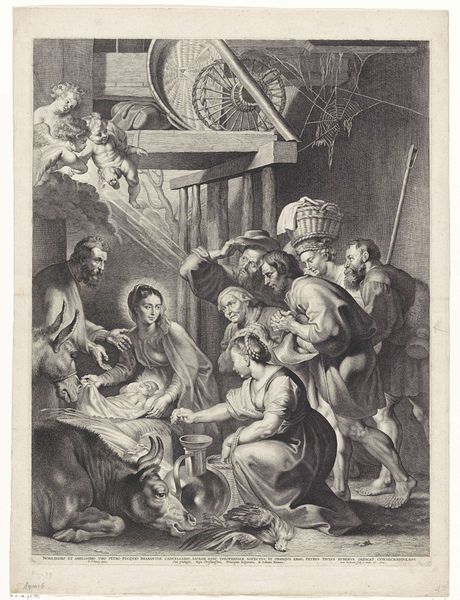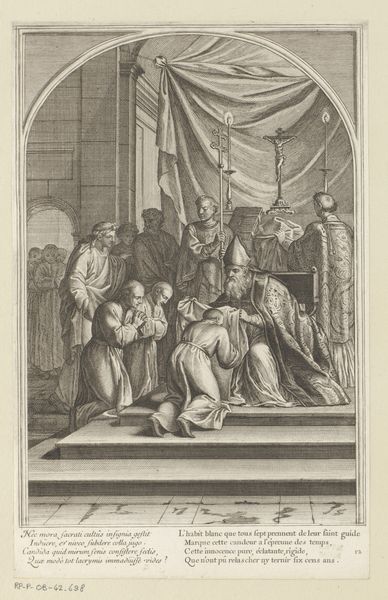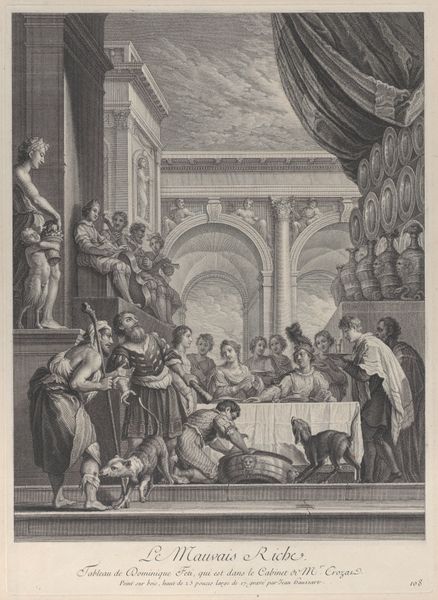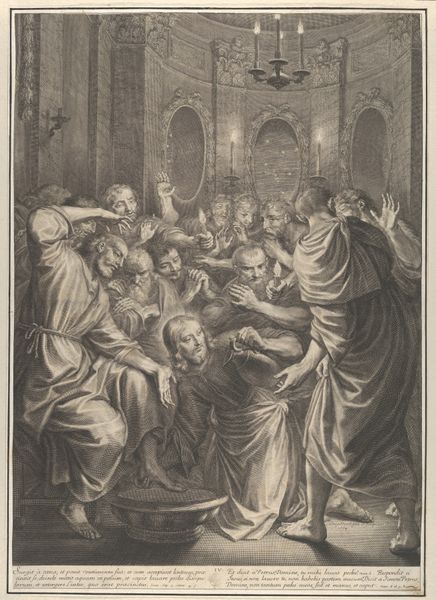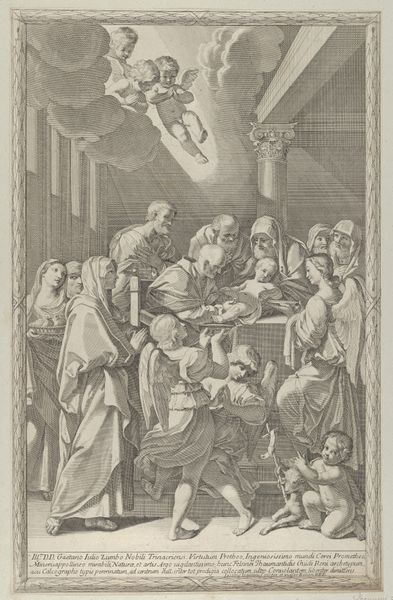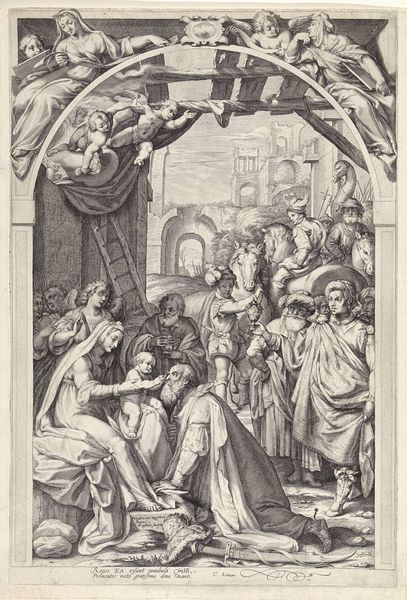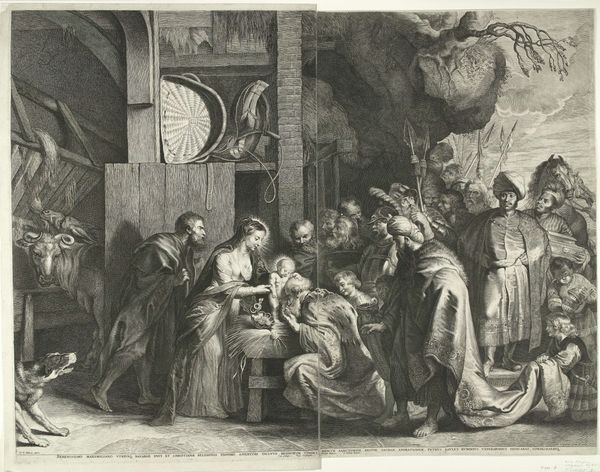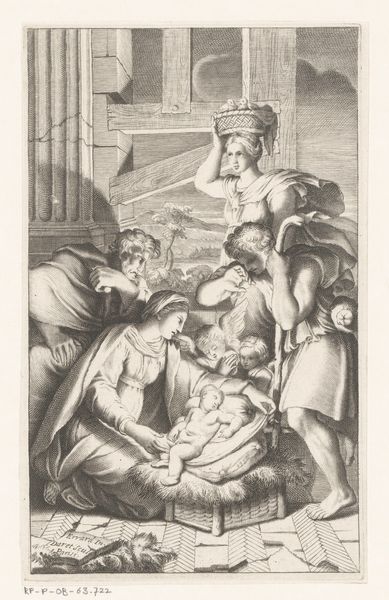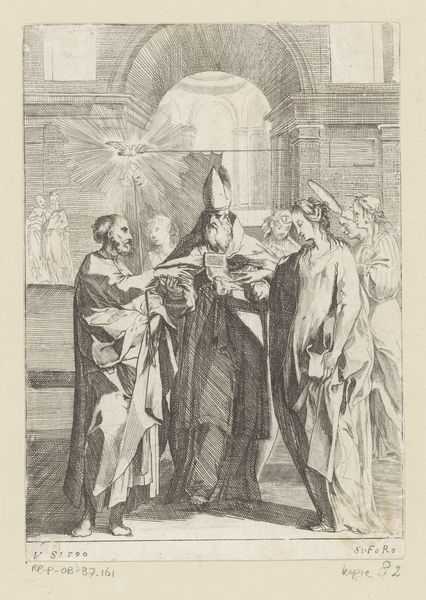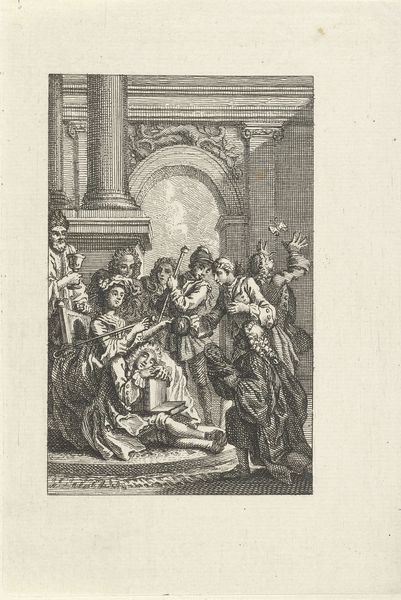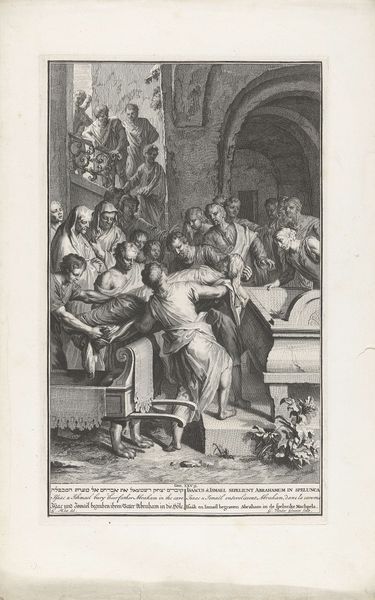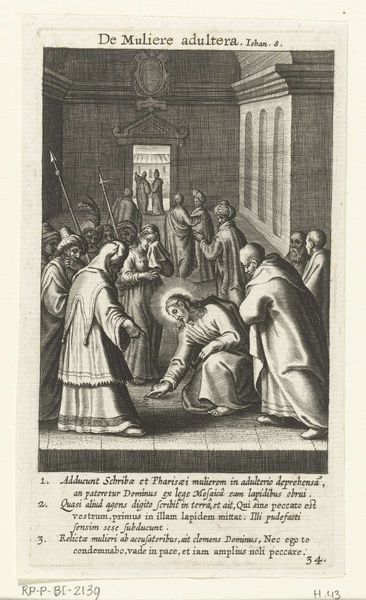
Dimensions: height 499 mm, width 304 mm
Copyright: Rijks Museum: Open Domain
Curator: Today we're looking at an engraving called "The Circumcision of Christ" made sometime between 1737 and 1812, after an earlier work by Guido Reni. The engraver was Giuliano Traballesi. Editor: It's striking how the light seems to emanate from the cluster of cherubic figures above, washing down onto the central scene. Very theatrical, isn’t it? Curator: Absolutely. Light and shadow play critical roles in Baroque compositions. But more than mere drama, the symbolic weight! This isn't simply about recording an event; it’s about faith and cultural memory. Circumcision itself, as a covenantal act, deeply binds the narrative to a continuous chain of meaning. Editor: Focusing on the composition itself, I'm intrigued by the radial arrangement of the figures, converging at the focal point—the infant Jesus on the altar. Semiotically, this directs the viewer's eye, while simultaneously emphasizing vulnerability and centrality. The gazes all meet. Curator: Precisely! Observe how Traballesi includes angels with implements of the Passion at the lower register, a prefigurative reference hinting towards Jesus's later suffering. These symbols act as memory prompts. Viewers from that time would readily connect those images with the narratives they represented. Editor: The contrast between the softness of the cherubs and the detailed musculature of the figures surrounding the altar also really jumps out, like you said; such purposeful manipulation of texture! And the architectural elements frame everything in a classical manner, reinforcing a sense of order. It makes a lovely container. Curator: The piece exemplifies the Baroque's knack for weaving theological concepts, cultural traditions, and emotional depth into singular powerful visual narratives. Think about its significance in personal faith; the emphasis on a messianic bloodline and covenant continuity. Editor: It's fascinating to see how these formal choices – the light, composition, and contrast–work to produce such a dramatic image and how well the original painting is echoed by the printmaker. Curator: Indeed. Engravings allowed wider access to seminal artworks. This engraving ensures continued cultural relevance as well as accessibility to religious devotion through easily produced and distributed artwork. Editor: Agreed. A beautiful balance between faith and aesthetics.
Comments
No comments
Be the first to comment and join the conversation on the ultimate creative platform.
